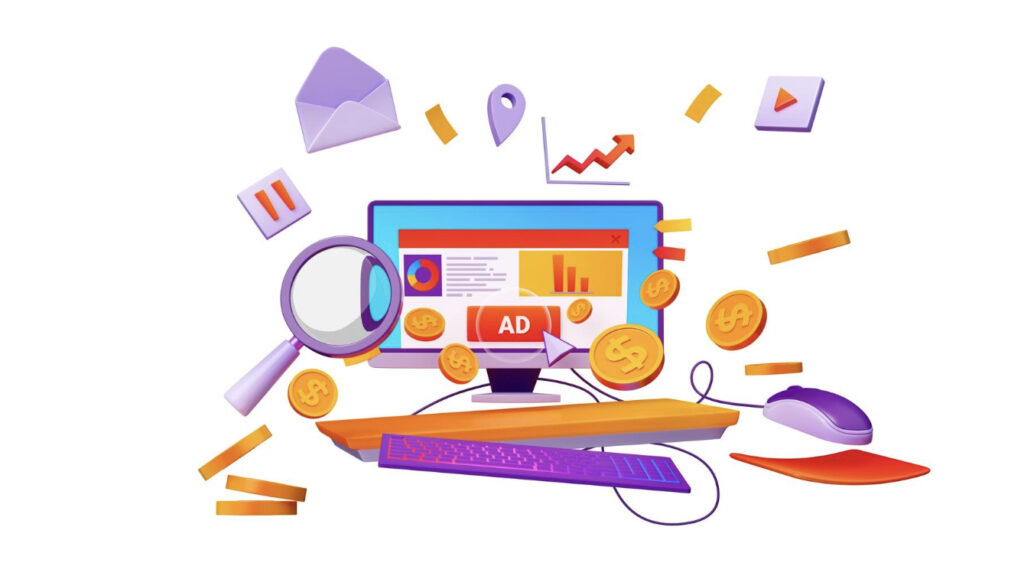Pay-per-click (PPC) advertising is a powerful tool to drive targeted traffic to your website. However, attracting visitors is only half the battle. The real challenge lies in converting those clicks into sales. This is where PPC landing pages come into play. Optimizing your landing pages for conversions can significantly boost your return on investment (ROI) and ensure your PPC campaigns deliver the desired results. In this blog post, we will explore the key elements of high-converting PPC landing pages and share best practices to help you optimize your pages from search to sale.
Understanding the Importance of PPC Landing Pages
What is a PPC Landing Page?
A PPC landing page is a standalone web page specifically designed for a pay-per-click advertising campaign. Its primary purpose is to convert visitors who have clicked on your PPC ad into leads or customers. Unlike your homepage or other web pages, a PPC landing page is highly focused and tailored to the ad’s message, ensuring a seamless user experience. It typically includes a compelling headline, relevant content, and a strong call to action (CTA) to encourage visitors to take the desired action.
Why PPC Landing Pages Matter
PPC landing pages play a crucial role in the success of your PPC campaigns. A well-designed landing page can significantly improve your conversion rates by providing a clear and relevant path for visitors to follow. By aligning the landing page with the ad’s message, you can create a more cohesive and persuasive experience that drives visitors to take action. Additionally, optimized landing pages can lower your cost-per-click (CPC) by improving your Quality Score, which is a key metric used by platforms like Google Ads to determine the relevance and quality of your ads and landing pages.
Key Elements of a High-Converting PPC Landing Page
Clear and Compelling Headlines
The headline is the first thing visitors see when they land on your page, so it needs to grab their attention immediately. A clear and compelling headline should directly address the visitor’s needs or pain points and offer a solution. It should be concise, impactful, and aligned with the ad copy to maintain consistency. For example, if your ad promises a free eBook on digital marketing, the headline on your landing page should reinforce this offer and highlight the benefits of downloading the eBook.
Engaging and Relevant Content
Once you’ve captured the visitor’s attention with your headline, the next step is to keep them engaged with relevant content. Your landing page content should be concise, informative, and focused on the value proposition. Use bullet points, short paragraphs, and visual elements to make the content easy to digest. Address common objections and highlight the benefits of your product or service. Remember, the goal is to persuade visitors to take action, so every piece of content should support this objective.
Strong Call to Action (CTA)
A strong call to action (CTA) is essential for converting visitors on your PPC landing page. Your CTA should be clear, compelling, and easy to find. Use action-oriented language that encourages visitors to take the desired step, such as “Download Now,” “Sign Up Today,” or “Get Started.” Additionally, consider using contrasting colors for your CTA button to make it stand out. Ensure that the CTA is strategically placed on the page, ideally above the fold, so visitors can see it without having to scroll down.
Best Practices for PPC Landing Page Optimization
Mobile Optimization
With the increasing use of mobile devices, it’s crucial to optimize your PPC landing pages for mobile users. A mobile-optimized landing page ensures that your content is easily accessible and navigable on smaller screens. Use responsive design techniques to adapt the layout to different screen sizes, and ensure that all elements, including images and CTAs, are properly sized and positioned. Mobile optimization not only improves the user experience but also helps you reach a broader audience and maximize conversions.
Fast Load Times
Page load time is a critical factor in the success of your PPC landing pages. Slow-loading pages can frustrate visitors and lead to higher bounce rates. To optimize load times, compress images, use efficient coding practices, and leverage browser caching. Tools like Google PageSpeed Insights can help you identify and address performance issues.
Enhancing Trust and Credibility
Use of Social Proof
Social proof can significantly enhance the trustworthiness of your PPC landing pages. Including testimonials, reviews, and case studies from satisfied customers can help to reassure new visitors of the value and quality of your offerings. Display logos of well-known clients or partners if applicable. Social proof leverages the positive experiences of others to build confidence and encourage conversions.
Security Badges and Guarantees
Security badges and guarantees can also boost the credibility of your landing pages. Prominently display badges from well-known security providers if you’re handling sensitive information, such as credit card details. Additionally, offering a money-back guarantee or free trial can reduce perceived risk and make potential customers more comfortable with taking action. This is especially effective in industries where trust is paramount.
Creating a Seamless User Experience
Consistent Branding
Consistent branding across your PPC ads and landing pages ensures a cohesive user experience. Use the same color schemes, fonts, and visual elements in your landing pages as in your ads to create a unified look and feel. This consistency helps build brand recognition and trust, making visitors more likely to convert. Ensure that your brand messaging is clear and aligned across all touchpoints.
Intuitive Navigation
While a PPC landing page should be focused and free of distractions, it’s still important to have intuitive navigation for any necessary links. Include clear and concise menus or buttons for key actions or information. Ensure that any links to further information, such as additional product details or company background, are easily accessible but do not overwhelm the primary call to action.
Leveraging Advanced PPC Strategies
Dynamic Text Replacement
Dynamic text replacement (DTR) allows you to customize the content on your landing page based on the keywords or phrases users searched for to find your ad. This creates a more personalized and relevant experience, increasing the likelihood of conversion. For example, if a user searches for “affordable web design,” your landing page can dynamically adjust to emphasize your competitive pricing.
Retargeting Campaigns
Retargeting campaigns can help you recapture visitors who did not convert on their first visit to your landing page. By using cookies to track these visitors, you can serve them tailored ads as they browse other sites, reminding them of your offer and encouraging them to return. Retargeting keeps your brand top of mind and can significantly increase conversion rates by re-engaging interested prospects.
Conclusion: From Search to Sale Success
Optimizing your PPC landing pages for conversions involves a combination of strategic design, relevant content, and continuous testing. By understanding the importance of PPC landing pages and implementing key elements such as clear headlines, engaging content, and strong CTAs, you can create a compelling user experience that drives conversions. Best practices like mobile optimization, fast load times, and A/B testing further enhance your pages’ effectiveness.
Additionally, measuring performance through key metrics and analytics tools provides valuable insights for ongoing improvements. Incorporating social proof, security badges, and consistent branding builds trust and credibility, while advanced strategies like dynamic text replacement and retargeting maximize your reach and conversion potential.
By following these guidelines and continually refining your approach, you can transform your PPC landing pages into powerful conversion tools, taking your digital marketing efforts from search to sale success.


